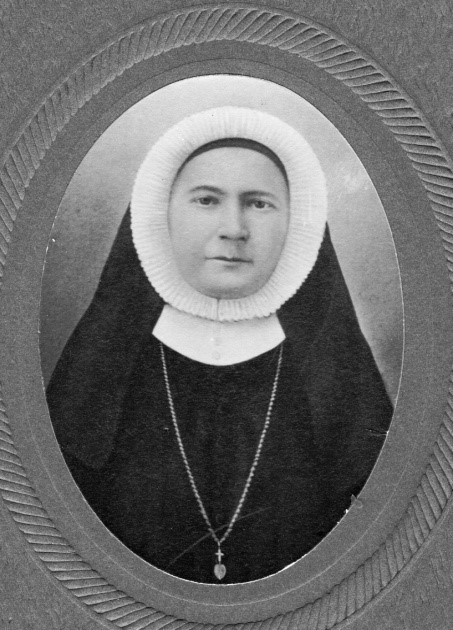U.S. Foundress

A weaver, Clementine Zerr wove together the new foundation of the Adorers of the Blood of Christ and its U.S. mission to the Congregation in Europe.
Clementine and four dozen of her Sisters were in the last group to board a ship and leave Germany as emigrants who became missionaries and pioneers in America.
Flushed out by anti-Catholic fervor in Germany at the time, the Sisters settled in a new land with other German immigrants to launch a Congregation of women religious who continue to pioneer new ventures.
Early Life
She was born Barbara Zerr on December 8, 1832, at Sasbachreid, Baden, Germany. At 19, she entered the Precious Blood Sisters in Ottmarsheim, Alsace-Lorraine, changed her name to Clementine, and professed vows on December 3, 1853. In 1847, prior to Clementine’s entry into the community, the Sisters had joined with the Adorers of the Blood of Christ, a group of Italian Sisters associated with the Missionaries of the Precious Blood.
In 1858, Clementine was sent to the Community’s house in Gurtweil, Baden. Gifted in the intricacies of managing a house, talented in handicrafts and spinning, and a natural leader, Clementine was quickly appointed to leadership roles with the Sisters. She was responsible for forming new members and traveled to Rome in 1864 to meet the then aging and ill Maria De Mattias, who founded the Adorers of the Blood of Christ in Italy.
Heading for America
In 1870, groups of the Adorers of the Blood of Christ left for the United States; Clementine led the group who departed in 1873 on a pioneer journey that would change them and the Congregation.
Along with other German immigrants, Clementine and the Sisters settled in remote, rural Piopolis, Illinois, and began teaching the children. When Monsignor Henry Muehlsiepen, vicar general of the St. Louis, Missouri Archdiocese where some of the Sisters lived, wanted them to break ties with the Italian part of the Congregation, Clementine refused. Her loyalty kept the international ties.
In 1876, the Sisters in Piopolis relocated to an abandoned seminary building in Ruma, Illinois, about an hour south of St. Louis. Unlike Piopolis where most of their neighbors spoke German, Ruma was an Irish-English settlement. Clementine quickly realized that if the community were to flourish in this country new to her Sisters, they would need to learn English, adapt European customs to an unfamiliar and untried territory, and grow with the land and its influx of immigrants.
Adorers taught in the small towns of southern Illinois; in Westphalia, Kansas in 1893; and a girls’ academy in East St. Louis, Illinois established in 1894.
By 1900, Clementine had begun a hospital in Red Bud, Illinois, to care for sick Sisters and it opened to area residents and became the first health care institution in the Congregation. By 1902. a central house opened in Wichita, Kansas, and the farming towns of rural Kansas benefitted from the presence of the Sisters in their schools. The westward movement spread to Oklahoma and New Mexico.
Moving Forward
Clementine knew that life in America would stretch the Sisters beyond European customs. She had to make decisions with no precedent to guide her except trust in Providence and an awareness of the needs of the people.
On January 24, 1906, Clementine, always impatient to locate Sisters in areas of great need, died in Wichita, Kansas. She was buried at the Sisters’ cemetery in Ruma, Illinois.
My grandmother was associated with the Precious Blood from 1902 untill 1909. I have her small box of keepsakes, most are items concerning the order. There is a telegram to my grandmother about Mother Cecilias death in Wichita and a death card. I wonder if there is a family connection. I also recently have been told my grandmother was a nun for 9 years but left without taking final vows. I would love to have more information, if that is possible. My Grandmother was from Germany, Anna Gerber and i believe her Sister name was Bertranda. She had a sister who also came over to Illinois, her sistesr name was Sister Concordia.
this is so fascinating. I was able to tour the convent at Wichita just today and I am so amazed at all the history. the accomplishments of these sisters is incredible. I am truly thankful to have been blessed with their presence.